We see safety vests everywhere—not only on construction sites but also on motorcycle riders and paramedics.
Safety vests are as common as construction shirts on jobsites. But, do you know the strict guidelines safety vests need to meet to fit into construction compliance standards?
For instance, did you know many readily available safety vests don’t meet construction compliance guidelines? That’s either because of the retro-reflective band quality, placement, or fabric color choice. This could potentially put you and your crew at risk.
Today we’ll look at:
- ANSI/ISEA 107 standard for safety vests
- Recommended class of hi-vis safety vests appropriate for various construction scenarios
- Essential branding tips to ensure your brand is visible and safety compliant
What Are the Essential Features of a Compliant Safety Vest?
For a safety vest to be compliant to existing standards, it should include a fluorescent background fabric in the recommended colors and retro-reflective bands placed according to its performance class.
Additional safety compliance features may be necessary depending on site hazards, for example, fire resistant fabric treatments for environments with a high fire risk.
We’ll break down these specifications later.
The American National Standard for High Visibility Safety Apparel and Headwear (ANSI/ISEA 107) defines, in detail, all safety compliance specifications for workwear.
Whereas, CAN/CSA Z96-02 and EN ISO 20471 are the equivalent safety standards in Canada and Europe, respectively.
Let’s briefly go over these compliance specifications for construction safety vests.
1- Background Color of the Safety Vest
ANSI/ISEA 107 recommends that you make the background or main fabric color for your safety vest one of these bright colors:
- Fluorescent yellow-green
- Fluorescent orange-red
- Fluorescent red
- Bright yellow-green
- Bright orange
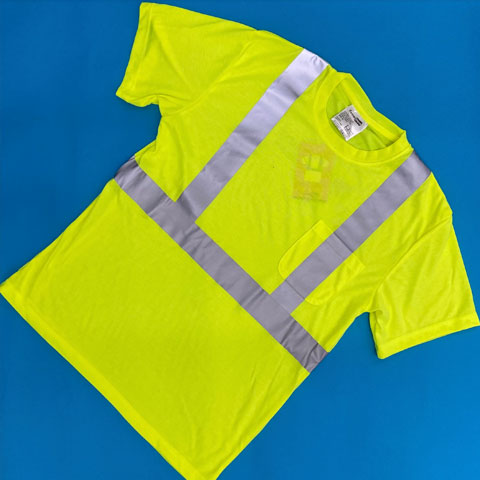 |
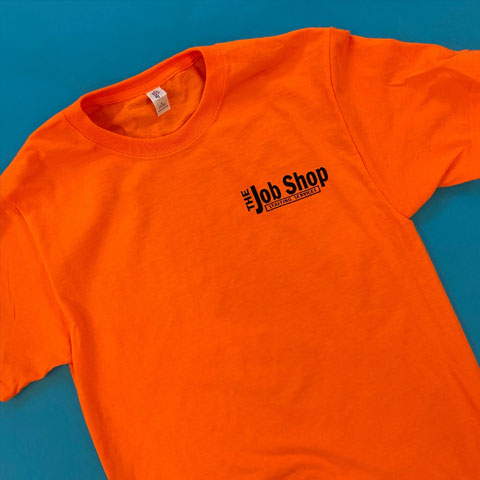 |
In these colors, you’re more visible and therefore safer on a construction site. This is especially important in worksites with moving vehicles and motorized equipment.
The US Bureau of Labor Statistics 2020 census found that the transportation and construction sectors account for 47% of workplace injuries.
Of these, ‘struck by’ injuries are the third most common type of injury accounting for almost 500 fatalities and about 10% of fatal occupational injuries annually.
Improving the visibility of workers on construction sites with compliant safety vests is key to achieving occupational safety and reducing the rate of these ‘struck by’ injuries.
In the table below, we compare the different situations ideal for the recommended background colors.
| Type of Background Material | Description | Ideal Situations |
| Bright Material | Eye catching green, yellow, orange, or red colors | Daytime visibility in sites away from vehicles |
| Fluorescent Material | Yellow, red, or orange colors that absorb invisible UV light and reflect it as visible light | Shaded areas with motorized equipment |
| Retro-reflective Material | Reflects light directly back to the light source | Nighttime or low light visibility areas where artificial lights are used by vehicles or motorized equipment |

2- Fit of the Safety Vest
Safety vests that don’t fit aren’t just uncomfortable, they can also cause safety hazards in the workplace. How so? By snagging on machinery or restricting the construction worker’s movement.
Below are the features of appropriately fitting safety vests:
- Not too snug, leaving sufficient room for movement and clothing underneath.
- No raw seams, edges, or tabs that can cause discomfort and undermine wearability.
- They should fit in a way that other garments or equipment, like tool belts or harnesses, don’t cover the retro-reflective strips.
Most safety vest manufacturers offer a variety of safety vest sizes, ranging from XS through to J (XXXXL) and 5XL. Sizing can vary across vendors, so it’s important to double check their size charts.
Here’s a table showing an example of how vest sizes correspond to chest measurements.
| Chest Size in Inches | Vest Size |
| 36" to 38" | XS |
| 40" to 42" | S |
| 44" to 46" | M |
| 48" to 50" | L |
| 52" to 54" | XL |
| 56" to 58" | 2X (XXL) |
| 60" to 62" | 3X (XXXL) |
| 64" to 66" | J (XXXXL) |
Expert Tip: Measure across the fullest part of your chest, ensuring that the tape doesn’t dip.
For layering over light clothing such as a t-shirt, buy a vest that’s your exact chest measurement. However, add 2–3 inches to your chest measurement if you plan to layer your vest over heavy clothing, like jackets.
3- Design of the Retro-Reflective Strips
Correctly designed retro-reflective strips should have the following features:
- Have a strip at least 2 inches (50 mm) in width.
- Two strips that pass vertically at the front, running from the shoulders to the waist.
- A horizontal strip at the navel running all around the body.
- Class 3 safety vests require retro-reflective around both arms and legs.
The last point brings up a crucial question about the performance classes for safety vests.
What Are the Performance Classes of Safety Vests?
Safety vest performance classes refer to the various categories of visibility requirements for safety vests based on the level of hazard workers are exposed to.
In the table below, we summarize the three main performance classes, their characteristics, and use cases.
| ANSI Performance Classification | Length of Retro-Reflective Tape | Placement of Retro-Reflective Tape | Areas Applicable |
| Class 1 |
|
|
|
| Class 2 |
|
|
|
| Class 3 |
|
|
|
Your safety director or site manager needs a copy of the latest ANSI/ISEA 107 publication, which covers in depth all features of safety apparel for construction.
Expert Tip: Before buying safety vests, check the care label which indicates whether it’s ANSI/ISEA 107 compliant, the performance class of the safety vest, and its other safety features, such as whether it’s flame retardant.
How Can You Brand Safety Vests Within Construction Compliance?
The general rule of thumb for branding safety vests within construction compliance, according to the Canadian Centre for Occupational Health and Safety (CCOHS), is:
- The front logo needs to be smaller than 16.25 inches (105 cm2) and shouldn't cover more than 3.8 sq. in. (25 cm2) of the retro-reflective strips.
- The back logo can be as big as 77.5 sq. in. (500 cm2) but not obscure any of the retro-reflective strips.
Working with the right branding partner ensures that regardless of whether you’re branding safety vests, jackets, or bibs, your logo placement is always optimal and fully compliant.
Frequently Asked Questions
Who needs high visibility safety apparel (HVSA) and safety vests?
The need for HVSA and safety vests is determined by two factors:
- The legislative requirements of the jurisdiction the construction site falls under
- Potential hazards a worker can encounter on site based on a hazard assessment
Where the worker is exposed to motorized equipment or oncoming traffic, fluorescent fabrics with retro-reflective strips are mandatory for high visibility.
Other protective features may be incorporated into safety vests to meet additional hazards. For example, flame retardant fabrics where fire is a risk or 5-point breakaway vests to prevent getting caught in machine parts.
What is ANSI/ISEA 107?
It’s an industry consensus standard first published in 1999 by the International Safety Equipment Association (ISEA) and the American National Standards Institute (ANSI).
Updated every 5 years, it’s a voluntary standard that specifies the requirements for high visibility safety apparel and headwear. It’s recognized and compliance mandated by many regulatory authorities, including OSHA.
What’s the difference between ANSI 207 and ANSI 107 safety vest standards?
ANSI 207 was the industry safety standard specifically developed for public safety workers, like law enforcement personnel.
However, it was incorporated into the ANSI 107 publication of 2015 with these new performance classes for high visibility safety apparel:
- Type O (Off-road): Performance class 1 for workers in temporary control areas, not exposed to high traffic (below 25 mph)
- Type R (Roadway): Performance class 2 (25–45 mph speeds) or class 3 (beyond 50 mph) for workers exposed to highway traffic or in roadway temporary control zones
- Type P (Public Safety): Performance class 2 or 3 for law enforcement and emergency responders exposed to struck-by hazards off-road or on roadways
Get Started on Your Custom Safety Vest Order
With the foundation of this beginner’s guide, you’re equipped to provide your construction crew with safety vests that are compliant to the relevant safety regulations.
As you upgrade the safety of your team, don’t forget to brand their safety vests accordingly with the services of an expert printer. Reach out to us today for a no-obligation custom quote.
Share on Facebook:
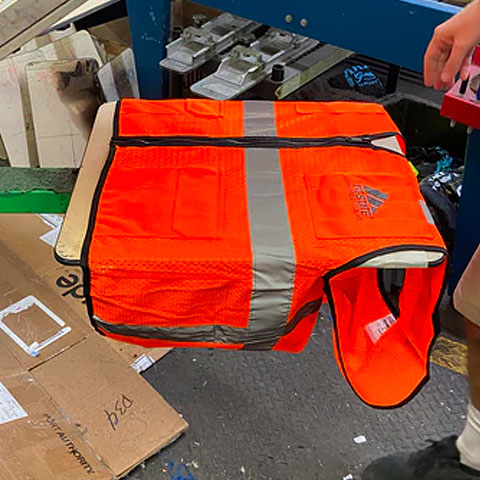
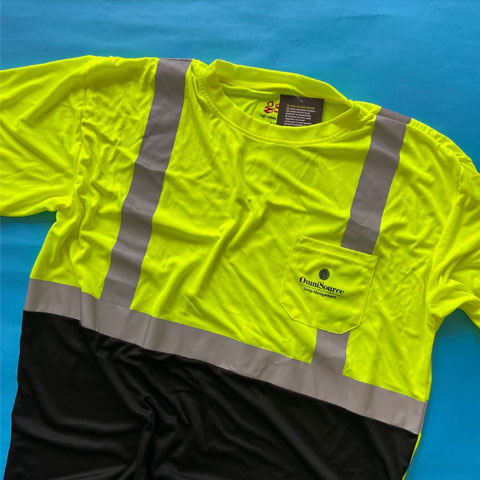
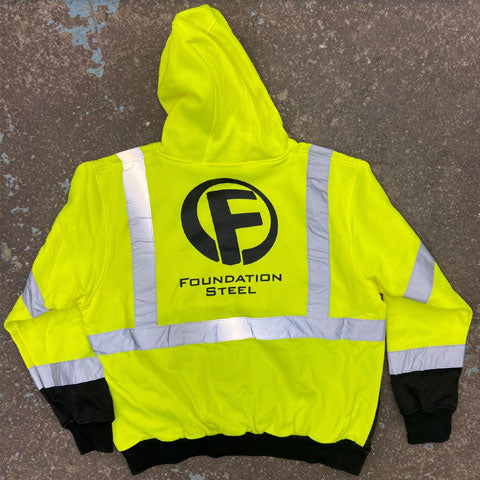

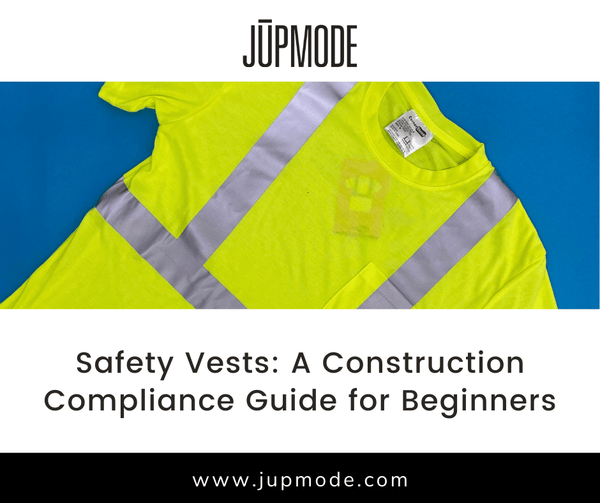









Comments
Write a comment